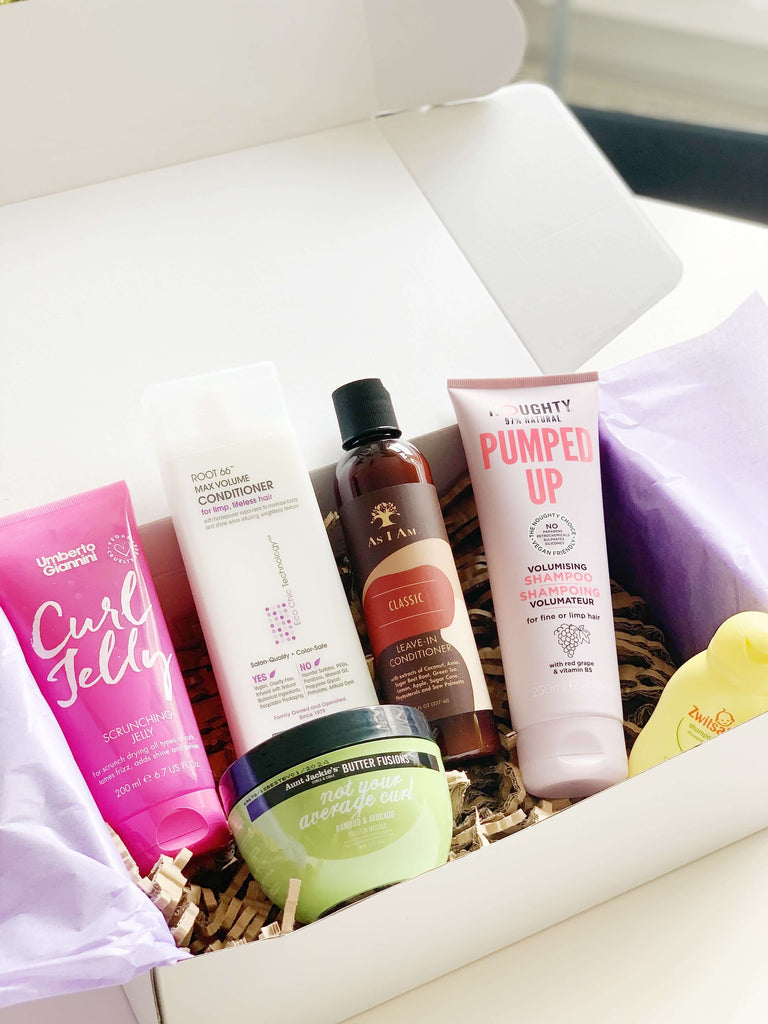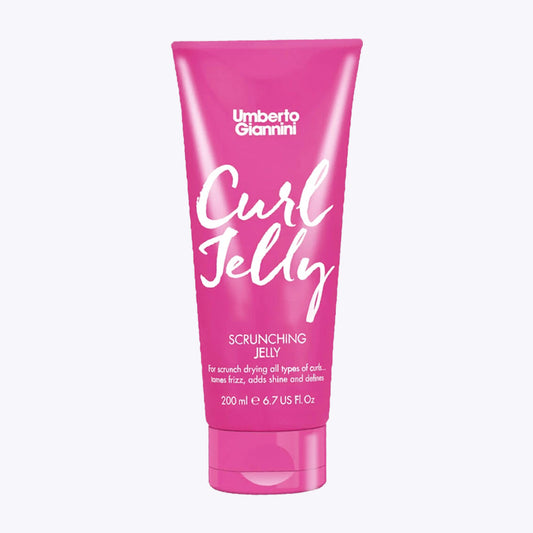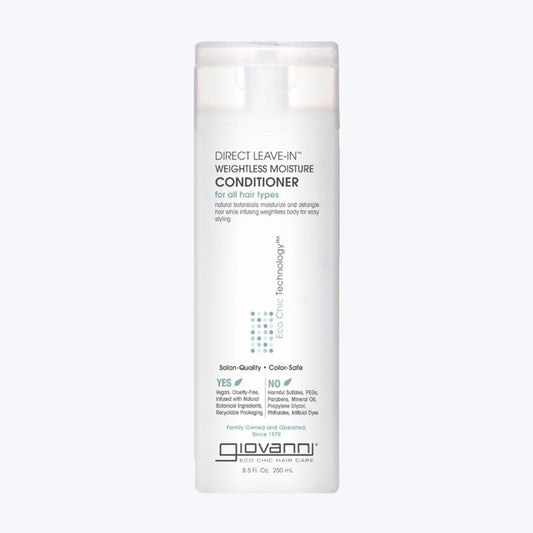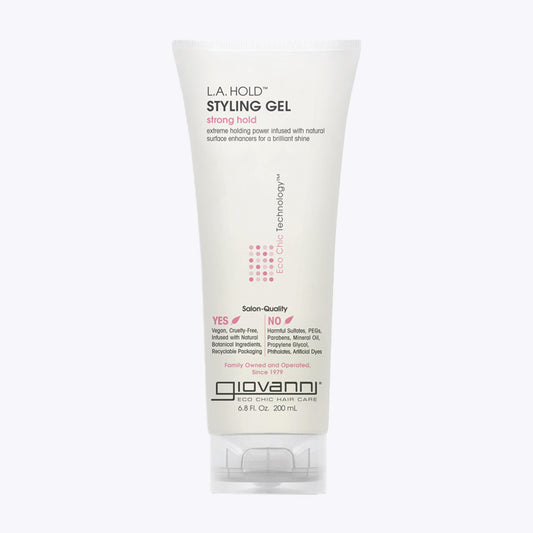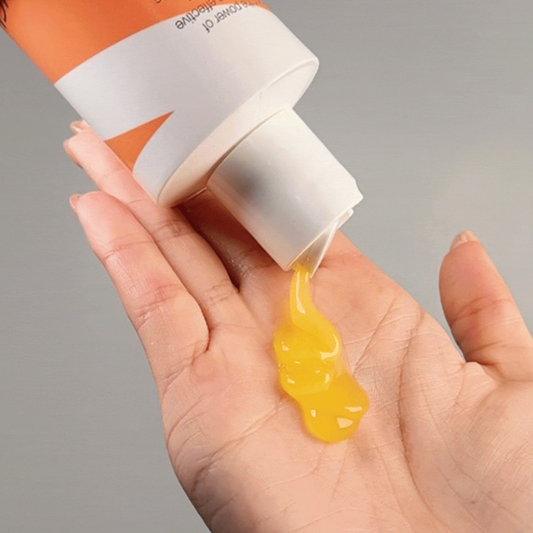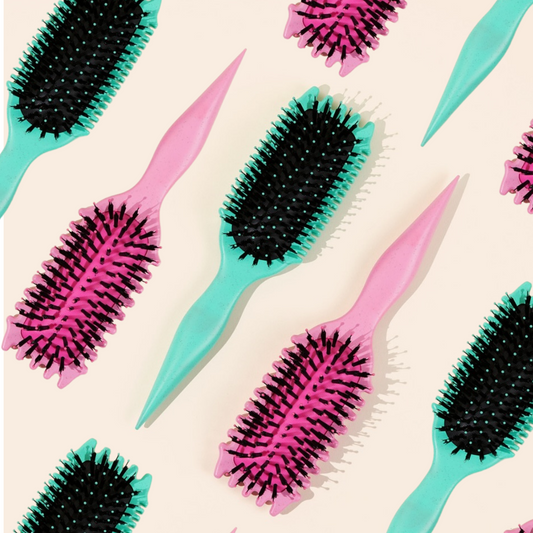You've probably noticed that you're using a lot of different products in your CG routine. From shampoo , conditioners, leave-ins to gel or mousse. Even though you don't use silicones in your hair products, for example, products can build up on your hair and scalp. In CG terms, this is called build-up. But what exactly is build-up? How do you recognize it? And more importantly: how do you get rid of it? We'll explain it all to you in this blog!
What is build-up?
Build-up occurs when product residues, oils or other influences (such as hard water) accumulate a layer on your hair and scalp. This layer continues to build up, which can cause your hair to become blocked and care products to be less effective. This can cause your hair to no longer sit properly and become more difficult to style.
How do you recognize build-up?
Build-up is sometimes not always easy to recognize but there are a number of clear signals that let you know that you may be suffering from build-up. You do not have to have them all but if you recognize several of them the chance is greater that build-up may be the culprit of your complaints.
These are signs of possible build-up on your hair:
- Your hair is limp and/or lifeless
- Your hair is falling out
- It's hard to style your hair
- You are bothered by a lot of fluff
- You have dull hair and therefore, little shine
- You suffer from an itchy scalp
- You experience a greasy layer on your scalp
- You never or hardly have cast in your hair
- Products no longer work for your hair
Who experiences build-up faster?
Anyone can get build-up, but people with finer or thinner hair (type 1/2 curl pattern ) often experience it faster than people with thicker hair. Do you regularly use a lot of styling products or do you not wash it often? Then build-up can also occur faster.
Gels that cause build-up
Some gels contain a lot of polymers . In short, these are ingredients that shape your hair and keep it in shape. A common one is PVP , for example, which is often combined with similar ingredients in a gel. If a gel contains a high concentration of these types of synthetic polymers, it can form a layer around your hair more quickly. In that case, do you not wash your hair regularly? And do you use the gel with PVP daily? Then this can cause build-up.
So check your gel for this ingredient! Note: you don't have to avoid this ingredient right away, but be aware that PVP can seal your hair faster than other ingredients that give hair hold and definition.
If you prefer a gel without PVP, look at more natural varieties or gels with a lower hold level.
Why should you remove build-up?
Of course, nothing is a must, but to keep your curls more beautiful and healthy, it is really necessary to recognize build-up and take action. Your hair closes itself off and therefore your hair becomes dull and untreatable. Products are no longer absorbed properly and this is of course a waste.
Here are other reasons to do something about build-up:
- Your hair can dry out because it can no longer absorb moisture
- Your hair may become more frizzy
- You spend much longer styling your hair
In short, it is important to remove build-up so that your hair care products continue to work properly.
I am suffering from buildup, what should I do now?
Are you suffering from build-up? No worries, because we are going to help you! With a few handy tips you will be rid of the build-up in no time and you can make a fresh start. It can happen to anyone. Choose one of the options below, this is what you can do against build-up:
- Do a final wash again: Or in other words also called a reset wash. A final wash contains sulfates, is a heavy cleanser. But if you wash your hair with this and then use a mask, this is still applicable. Be careful, do not do a final wash too often because it can dry out your hair!
- Using a clarifying shampoo : A clarifying shampoo is a shampoo that contains much stronger cleansers than an 'average' or mild shampoo. They sometimes contain sulfates or look-alike ingredients. With these types of shampoos we also advise to limit the use. For example once a month or every 2 weeks. Keep a close eye on your hair.
Extra tip: Do you feel like your hair needs a deep cleansing wash more often? Feel free to do so and then gradually reduce the use.

Washing your hair with apple cider vinegar
On the internet you read a lot about washing with apple cider vinegar. We strongly advise against this for your hair and certainly if you have curls. Did you know that the pH of apple cider vinegar does not match your scalp and hair? This can cause the pH of your scalp to become unbalanced and you may get itching, dandruff or irritation. Do you still want to try it despite our advice? Then make sure you take the following steps:
How do you do an AVC Rinse?
Buy cloudy apple cider vinegar and dilute it with water. You can use this for the proportions: 1 part apple cider vinegar to at least 2 parts water. Be careful not to get it in your eyes, because that will sting. Also always use a conditioner when you are done, to protect your hair.
Additional tips to prevent build-up
We have already given you some tips in this blog on how to prevent and fix build-up. But there are still some important extra tips that we want to give you.
1. Keep washing your hair regularly
Sometimes you hear it: don't wash your hair too often. But just use a shampoo in your routine. You don't have to wash it every day, but 2 to 3 times a week is sufficient and recommended to maintain a healthy and clean scalp. Do you want to know more about the right shampoo? Then read on here .
2. Use light products
Do you have fine hair and do you use all kinds of heavy products? Then it is possible that your hair is more prone to build-up because these types of products simply do not suit your hair. Switch to light products .
3. Use your hair products as directed on the label
Always make sure you follow the instructions as they are stated on the label. Using a conditioner as a leave-in? A no-go! Because did you know that formulators choose certain ingredients that are suitable for rinsing out?
4. Avoid too many products on your scalp
Use your conditioner only on the lengths of your hair, so avoid your scalp
5. Rinse your hair thoroughly
It probably happens sometimes: you want to wash your hair quickly. Always make sure your hair is rinsed well when you get out of the shower. If necessary, take the shower head in your hand to make your hair properly moist, and turn your head well to the left, right and forward.
6. Use a scalp brush
Quickly wash your hair? Then it is possible that you are not cleaning all parts of your scalp properly. The solution? Use a scalp brush ! It has silicone pins and a handle that allows you to massage the shampoo very well onto your scalp. It also gives a wonderfully relaxed feeling!
7. Lactic acid in your hair mask or conditioner
Did you know that certain ingredients in conditioners and masks can help remove excess oil and dirt from your hair? One example of this is Lactic acid. It is a lactic acid that can help you extra with removing build-up .
8. Choose a leave-in OR(!) cream
It is useful to make a choice between using a leave-in or cream . Do not use both at the same time. Why? These are often products that contain oil and butter to nourish your hair. If you use both it can be too much of a good thing, especially with finer hair or wavy hair.
9. Use small(er) amounts
Less is more. Always start with small amounts when using products such as a leave-in or cream. Build up the use so that you see how your hair reacts to the products.
10. Hard water, limescale and washing your hair
The water you wash with or spray in your hair can play a role in product build-up. Do you live in an area where hard water comes out of the tap? Then limescale in the water can form a layer around your hair, which prevents your hair from breathing properly. There are solutions for this, such as installing a hard water filter in your home or a modified shower head. An alternative is to regularly use a clarifying shampoo .
Maybe you don't have a build-up
It is also possible that you do not suffer from build-up. It is also possible that you use hair products that do not work well together or that you use hair products that do not suit your hair type. You may also naturally have a tendency towards oilier hair. If you wash your hair continuously with a strong shampoo, this will have consequences for your scalp. Your scalp produces natural skin oil to protect your scalp and for a good moisture balance. So if you always use an aggressive cleanser? Then you are constantly washing away this layer. The result? Dull hair, sagging hair or untreatable hair.
Hopefully this blog has helped you learn more about build-up. Contact us if we can help you further! Discover all hair care and clarifying shampoos on our webshop.
